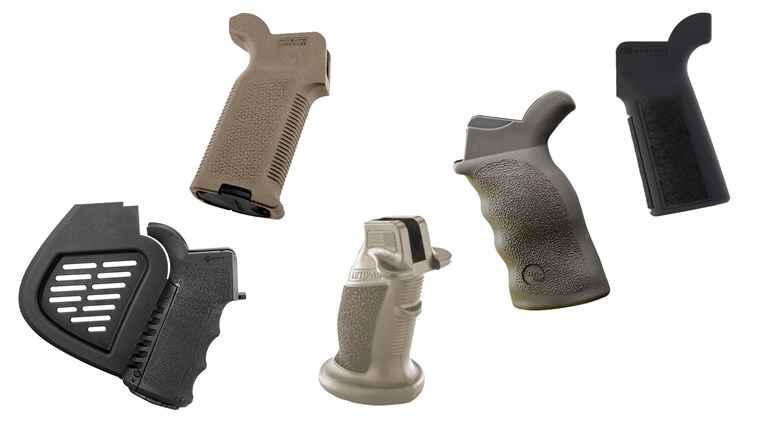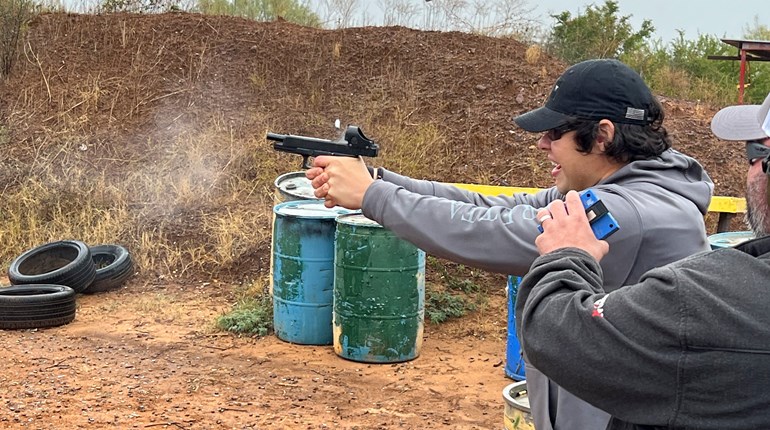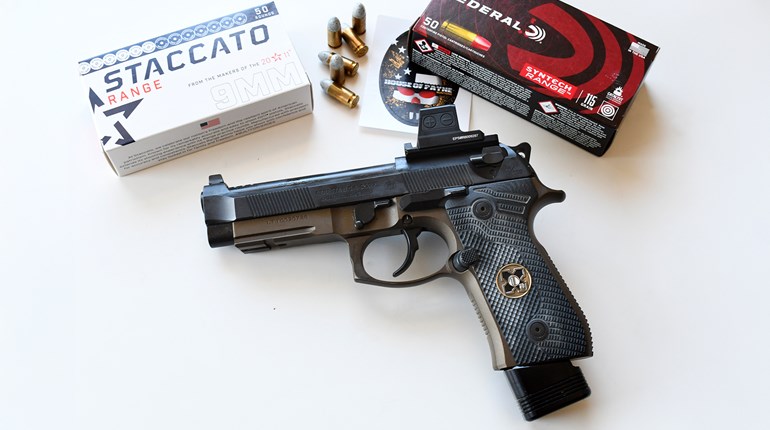
The Plumb Precision reticle is the brainchild of Frank Plumb, a retired US Army Special Forces Warrant Officer and owner of Plumb Precision, LLC and it is one of the more interesting reticle designs of recent years. The first time I saw the Plumb reticle, it reminded me of the then cutting-edge reticle that is found in the Soviet PSO-1 scope issued with the SVD Dragunov rifle. The Plumb reticle is the 21st century equivalent to what the PSO-1’s reticle was in 1963, as that old Soviet reticle was one of the first to be illuminated, it was also one of the first to feature a built-in range estimator and markings that denote bullet drop. Today, the Plumb reticle stands out with a clever “do-it-all” layout that allows shooters to make reflexive shots at close distances, quicker reactionary shots at longer distances or deliberately precise shots at longer or extended distances. Combined with the Steiner M8Xi Dual Plane 1-8 x 24 LPVO, this reticle can make any carbine it is mounted on truly shine from 0 to 800 meters, depending on the chambering of your rifle.
How The Plumb Reticle Works
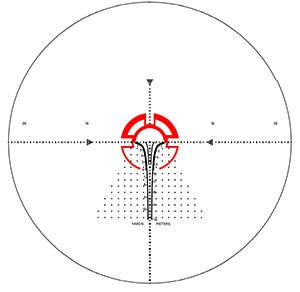 The most distinctive aspect of the Plumb reticle is its pair of inner and outer V-shaped ranging funnels. Both the inner and outer ranging funnels are designed to proportionally measure either 150mm or 450mm starting from 100 meters or yards. These measurements coincide with the widths of popular targets such as the NRA B-8 bullseye and IPSC steel or cardboard silhouettes–all extremely common across various shooting competitions. Because these arcs are proportional, they can easily be used to find the proper hold for targets at various distances throughout the range, stage or course of fire. One just needs to line up the target between the arcs while compensating for the ballistic drop (in Mils) of their chosen cartridge. Since the Plumb reticle is caliber-agnostic, it is not a true BDC function and the shooter must use their own ballistic data set to fill in those blanks.
The most distinctive aspect of the Plumb reticle is its pair of inner and outer V-shaped ranging funnels. Both the inner and outer ranging funnels are designed to proportionally measure either 150mm or 450mm starting from 100 meters or yards. These measurements coincide with the widths of popular targets such as the NRA B-8 bullseye and IPSC steel or cardboard silhouettes–all extremely common across various shooting competitions. Because these arcs are proportional, they can easily be used to find the proper hold for targets at various distances throughout the range, stage or course of fire. One just needs to line up the target between the arcs while compensating for the ballistic drop (in Mils) of their chosen cartridge. Since the Plumb reticle is caliber-agnostic, it is not a true BDC function and the shooter must use their own ballistic data set to fill in those blanks.
For close-range shooting, the Plumb reticle makes use of its own donut style targeting ring, and more deliberate precision shooting, it also employs a milliradian based targeting grid. The elegance of the reticle is how it combines the close-range illuminated targeting ring with the ranging arcs and the proven mil-based targeting grid.
Real Life Application: The Steiner M8xi Dual Plane LPVO Optic
The Steiner M8Xi Dual Plane is a premium low powered variable optics riflescope. Its German made glass offers excellent clarity, light transmission and almost zero distortion on 1x. The turrets on this optic click in an assertive manner and track well. Twisting on the throw lever feels extremely smooth and solid. The extremely generous eyebox on the Steiner M8Xi is quite competitive against other scopes in its class, like the Nightforce ATACR LPVO or the Vortex Razor-III LPVO. One thing that sets this Steiner apart from other scopes in its class is the fact that the scope has a dual plane scheme. At lower magnifications, the reticle appears on the second focal plane which makes it quicker to acquire targets compared to its first focal plane only counterparts, but when adjusted to higher zoom levels it behaves like any other FFP optic.
While the scope is caliber agnostic and suitable for cartridges like the 7.62 NATO, 6.5 Creedmoor, 5.56 NATO, etc. I primarily did my testing and evaluation using two different 5.56 NATO firearms. To get a feel for the scope, I first mounted the Steiner M8Xi Dual Plane on my Colt 6700 full-size AR-15 rifle. Shooting for groups at 100 yards was easy with the Steiner’s central aiming point, a small cross that does not block out targets with sub 2-inch aiming points.
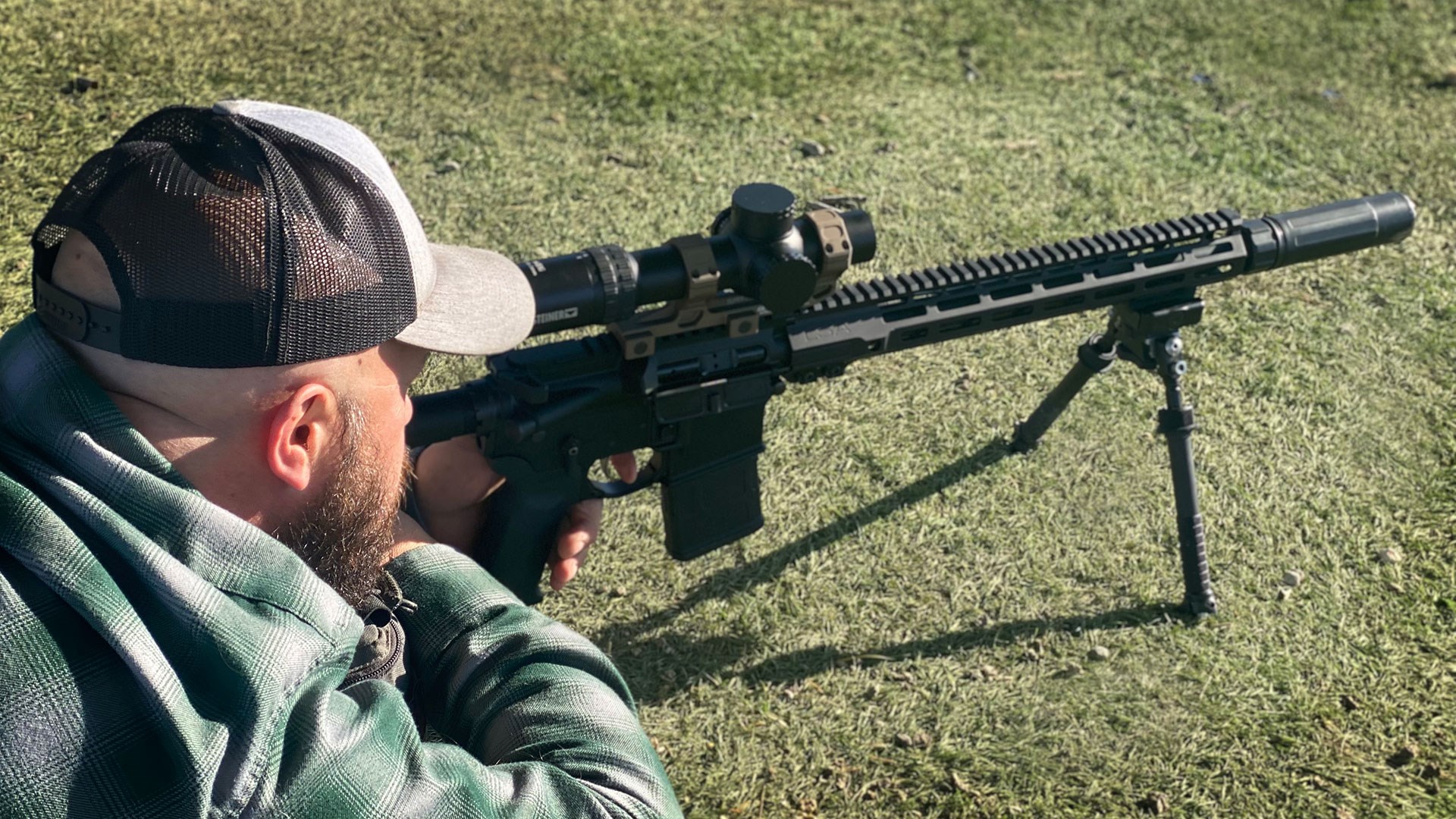
The real workhorse used to evaluate the Steiner M8Xi was a Lone Star Armory TX4 5.56 NATO carbine with a 14.5-inch, 1:7-inch twist barrel that was also wearing a Dead Air Silencers Sandman-K 5.56 NATO suppressor. The TX4 carbine was zeroed using Halworx Ballistics 5.56 NATO 77-grain Sierra Matchking loads. Once zeroed at 100 meters, I took the carbine to a long distance target bay that had full-size steel IPSC silhouettes and gongs at one hundred meter intervals. I shot the LSA TX4 carbine from 300 to 600 meters, a reasonable limit given the overall ballistics of a 14.5 inch 5.56 NATO carbine. The Steiner and the TX4 made it extremely easy to connect on steel silhouettes at 300 and 400 meters once I “locked in” on the shoulders in the ranging funnel of the Plumb reticle. Impacts at 500 meters also came easily after making the correct windage holds. At 600m I really had to concentrate as the 77-grain bullets started to slow down. I did notice that part of the line that made up the V-shaped funnel covered some of the IPSC steel silhouette when holding for wind to either side. This is not an indictment against the optic or the reticle. Aiming at targets at 600 meters or beyond can become challenging for optics that top out at 8X magnification.
Closing Thoughts
The fact that the Steiner M8Xi LPVO offers a second focal plane sight picture at low magnifications while making use of its ranging funnel at intermediate ranges would make it an extremely attractive riflescope for competitive shooters who take part in disciplines like 3-gun where IPSC silhouette targets are commonplace. The Steiner M8Xi along with the Plumb reticle are also showing a lot of promise in modern designated marksman rifle concepts like the MRGG (mid-range gas gun). Generally speaking, LPVO scopes continue to soar in popularity across different price points and market segments because of the versatility they bring to any rifle. Both serious and amateur shooters alike are making them go-to optics on carbines today. An LPVO like the Steiner M8Xi is further proof of continuing improvement on both extremes of magnification ranges, and the gaps between these LPVOs versus traditional fixed 1X red dot.












